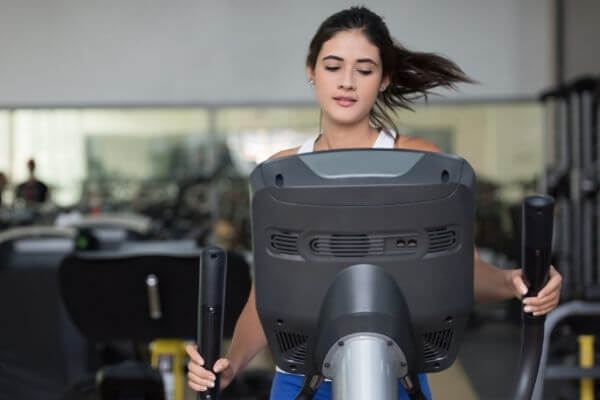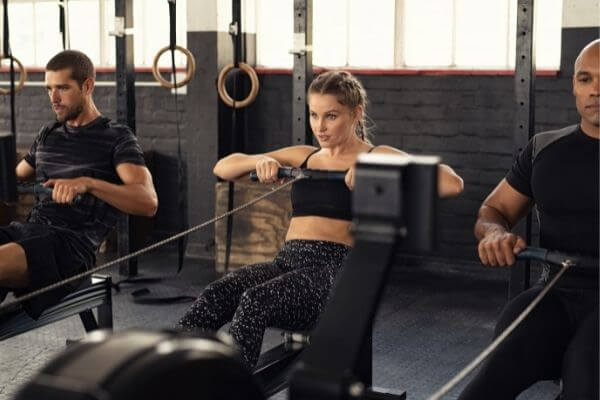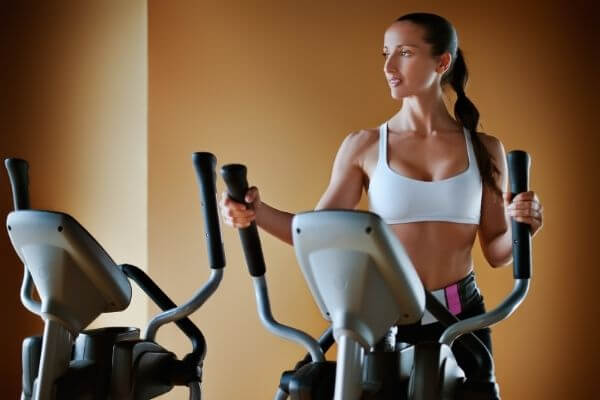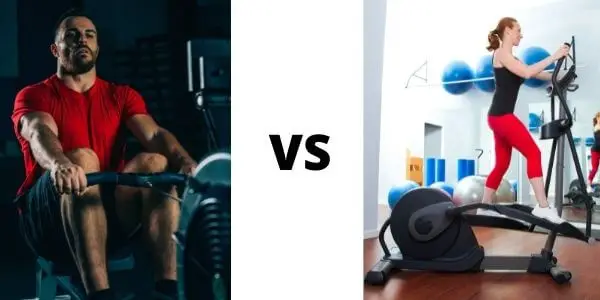Many people who purchase home fitness equipment give up working out in just a few weeks. You’ve probably seen some of your friends’ stationary bikes gathering dust and being used as clothing hangers.
That’s upwards of $500 down the drain.
You don’t want that happening to you.
To avoid that, read the article below. We’ll explain the differences between rowing machines vs. ellipticals, from the ease of use, impact, the muscles worked, calories burned, and many more.
In just a few minutes, you’ll understand how to make the correct decision. Keep reading below!
Table of Contents
Ease Of Use
Whether you’re getting an elliptical or rowing machine, both are relatively easy to use, though the elliptical is more intuitive.
The cross-trainer may look weirdly intricate, but you need to hop on and start moving. Your arms and legs will create momentum, and you’ll just have to swing along.
Conversely, mastering proper technique is slightly more complicated on a rower—nothing you can’t achieve, though. Just watch one of the hundreds of YouTube tutorials to get you started.
Remember that you need to maintain a correct posture to exercise your muscles comprehensively and avoid injuries.
Impact

Both machines are considered low impact because you’re not jumping up and down on them. That way, you can exercise your entire body and burn lots of calories without going through an utterly strenuous routine.
But here’s the gist:
Rowing machines are more rigid on your joints. After all, you’ll be bending your knees and pushing with them, using your hips and ankles quite a lot too. That can be dangerous or even downright impossible if you’re mobility-challenged or have chronic joint pain.
But it can also be excellent.
After all, if you’re not exercising your joints, you’ll never be able to strengthen them.
So, depending on your preexisting health conditions and degree of pain, your physical therapist may or may not okay rowing exercises.
The other impact-related consideration is this:
Ellipticals are more weight-bearing than rowers. You’ll be standing on an elliptical, so you’ll have to support a lot of your weight when using this machine. Although exercising on an elliptical isn’t as weight-bearing as walking or running, it’s still better than sitting.
Why does that matter?
Weight-bearing exercises are critical if you’re trying to prevent or even reverse bone loss. Thus, you can avoid/ alleviate chronic conditions like osteoporosis.
So while ellipticals are technically better than rowers in reducing the risk of osteoporosis, rowers aren’t useless either. Rowing strengthens your upper and lower back muscles, which is another essential factor in fighting osteoporosis.
Training Type

You can push as hard as you want, whether you’re getting an elliptical or rowing machine. Both are valuable instruments for those 30 minutes of recommended daily exercise that will help us live longer and healthier lives.
So, both ellipticals and rowers will strengthen your heart, improve your endurance, sleep, and mental health. Besides, exercise will accelerate your metabolic rate and boost your immune system.
Both rowers and ellipticals are, thus, suitable for slow-paced, aerobic, HIIT, or even anaerobic routines.
Pro tip: Use a heart rate monitor to ensure you’re exercising according to your needs. For example, reach the fat-burning zone if you want to lose weight quickly.
However, rowers are better for endurance and resistance training. You can push harder on a rower, which means you can sculpt your muscles more efficiently.
Muscles Worked
Rowers and ellipticals train your entire body, but they don’t focus on your muscle groups equally.
Rowers will activate your biceps, deltoids, core, quads, and hamstrings. However, you’ll get a bit less activity in your triceps and chest unless you’re using these muscles to push into the handles.
Conversely, ellipticals will engage all your muscles almost the same but using less resistance.
That means ellipticals are better for toning, whereas rowers are best for building lean muscle.
Calories Burnt

A Harvard study reveals the number of calories you can expect to burn depending on your weight and type of activity.
So, in 30 minutes, a 185-pound person will burn:
- 294 calories doing moderate rowing
- 378 calories doing general training on an elliptical
- 440 calories doing vigorous rowing
Here’s what we deduce from these numbers:
- Whether you’re rowing or elliptical-ing, you can burn a lot of calories to lose weight quickly. Within a week of challenging 30-45 minute workouts, you can get rid of a pound of fat.
- Ellipticals are technically better than moderate rowing at helping you shed weight quickly. However, rowers increase your muscle mass, which means they accelerate your resting metabolic rate so that you can burn more calories even when you’re at rest.
- Vigorous rowing will theoretically help you lose weight faster than general training on an elliptical, but you can’t do that every day. Your muscles need plenty of time to recover if you want to avoid injuries and plateaus.
Price
Rowers have simpler mechanisms compared to cross-trainers. That means they require fewer resources and technology, so your chances of finding a cheap, quality rower are higher.
Conversely, the threshold for budget ellipticals is a bit higher.
Rowing Vs. Elliptical: What Should You Choose?

A rowing machine is better for building lean muscles and endurance. It will help you exercise your joints and to lose weight because it accelerates your metabolic rate. On the other hand, rowers don’t work out your triceps and chest a lot, and they have a steeper learning curve.
If you’re on a budget, you have more chances of getting a value-for-money rower.
Alternatively, ellipticals are better for low-impact aerobic workouts that protect your joints and tone your muscles. Training on an elliptical will strengthen your bones, but it won’t help you build lean muscle or accelerate your resting metabolic rate. Besides, ellipticals are slightly costlier than rowers.
So, when making your final choice, remember to start with your needs and preexisting health conditions. For example, rowers and ellipticals are both excellent options to stay healthy. Still, rowing is better for resistance training and muscle-building, whereas ellipticals are best for low-impact toning goals.
- 7 Exercises for Pregnant Women in the First Trimester: Safe and Effective - January 30, 2025
- Our equipment recommendations - October 30, 2024
- Here’s What Doing Cardio Every Day Does To Your Body - August 21, 2024

